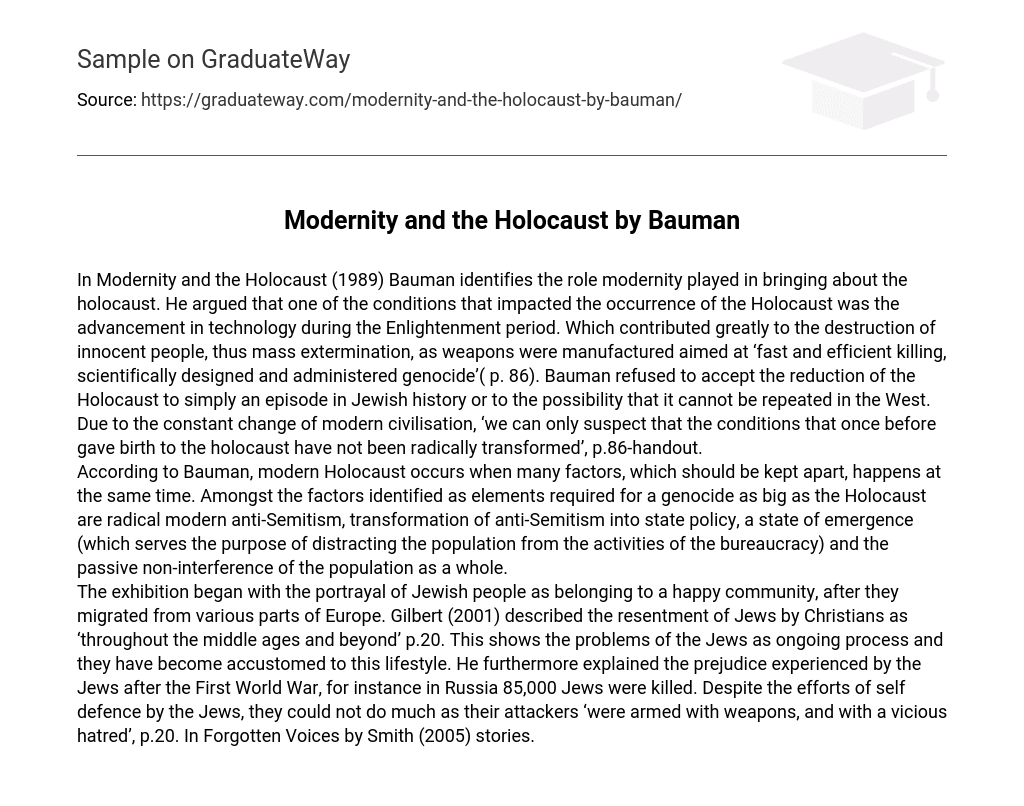In Modernity and the Holocaust (1989) Bauman identifies the role modernity played in bringing about the holocaust. He argued that one of the conditions that impacted the occurrence of the Holocaust was the advancement in technology during the Enlightenment period. Which contributed greatly to the destruction of innocent people, thus mass extermination, as weapons were manufactured aimed at ‘fast and efficient killing, scientifically designed and administered genocide’( p. 86).
Bauman refused to accept the reduction of the Holocaust to simply an episode in Jewish history or to the possibility that it cannot be repeated in the West. Due to the constant change of modern civilisation, ‘we can only suspect that the conditions that once before gave birth to the holocaust have not been radically transformed’, p.86-handout. According to Bauman, modern Holocaust occurs when many factors, which should be kept apart, happens at the same time. Amongst the factors identified as elements required for a genocide as big as the Holocaust are radical modern anti-Semitism, transformation of anti-Semitism into state policy, a state of emergence (which serves the purpose of distracting the population from the activities of the bureaucracy) and the passive non-interference of the population as a whole. The exhibition began with the portrayal of Jewish people as belonging to a happy community, after they migrated from various parts of Europe. Gilbert (2001) described the resentment of Jews by Christians as ‘throughout the middle ages and beyond’ p.20.
This shows the problems of the Jews as ongoing process and they have become accustomed to this lifestyle. He furthermore explained the prejudice experienced by the Jews after the First World War, for instance in Russia 85,000 Jews were killed. Despite the efforts of self defence by the Jews, they could not do much as their attackers ‘were armed with weapons, and with a vicious hatred’, p.20. In Forgotten Voices by Smith (2005) stories.





